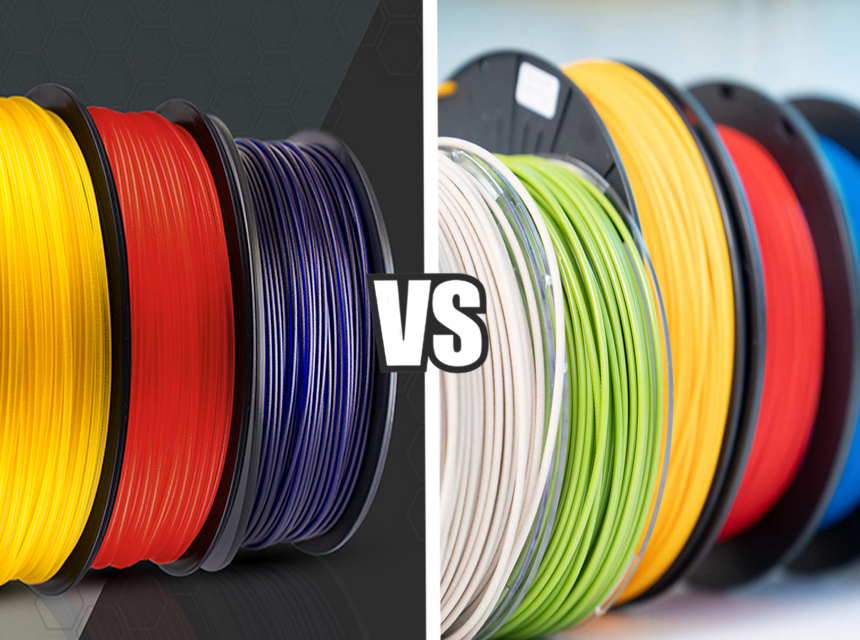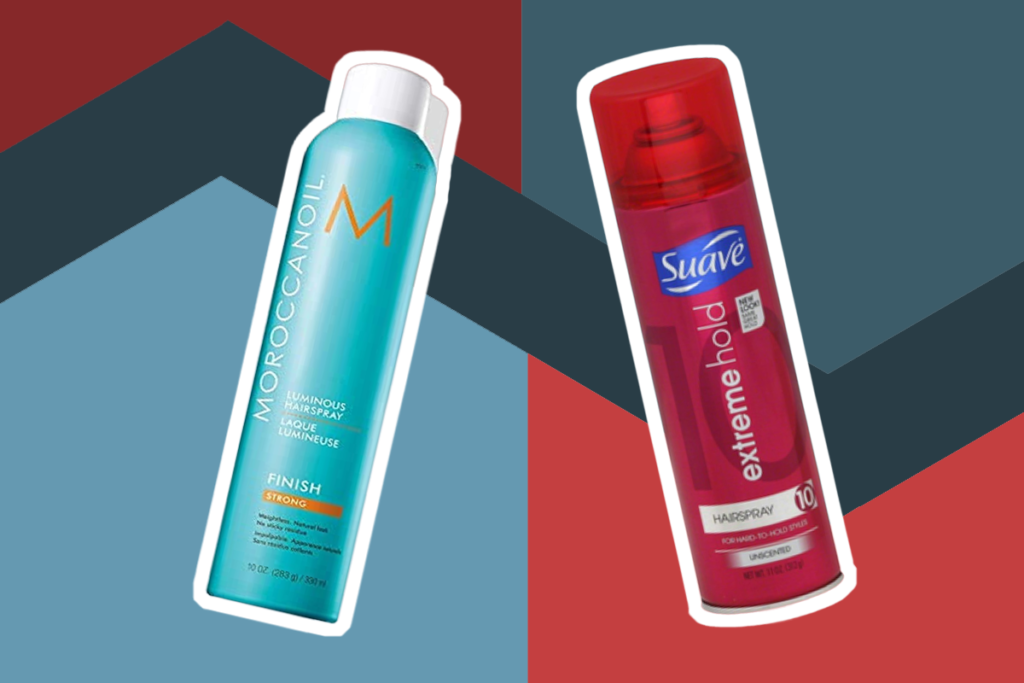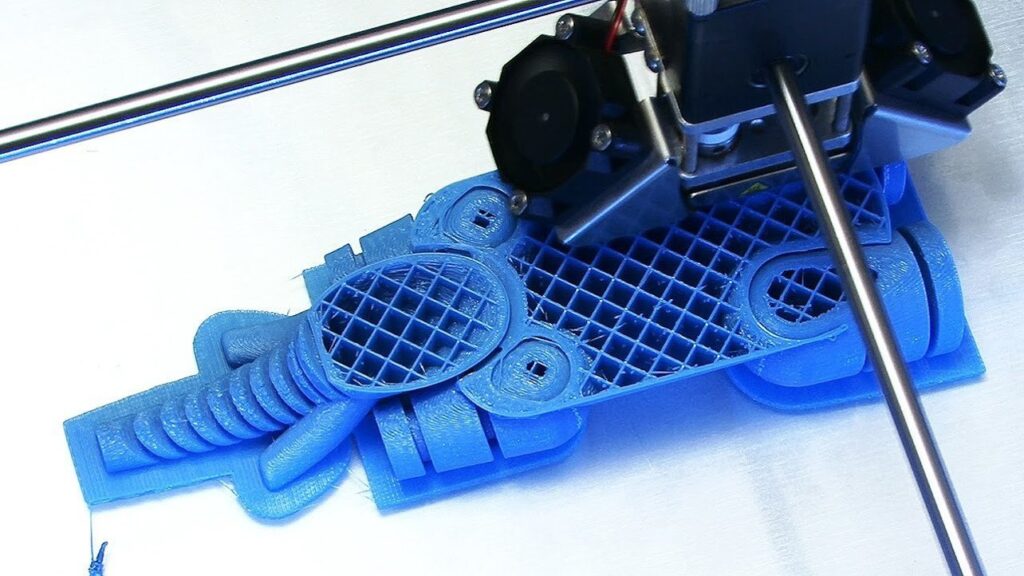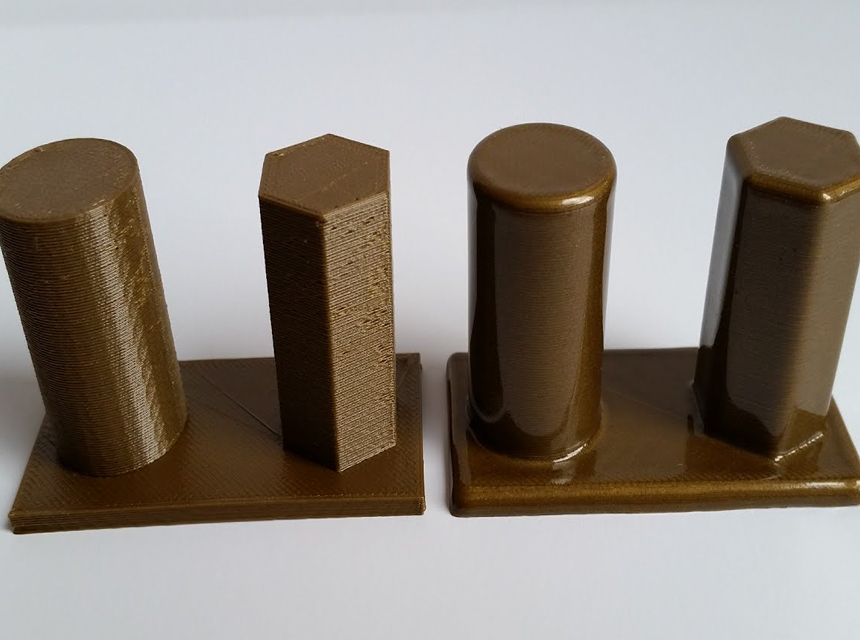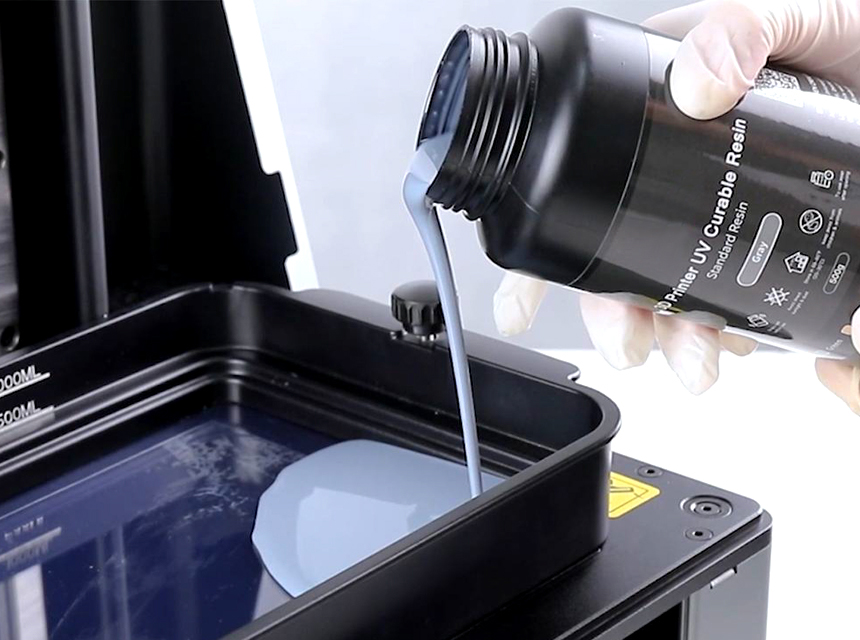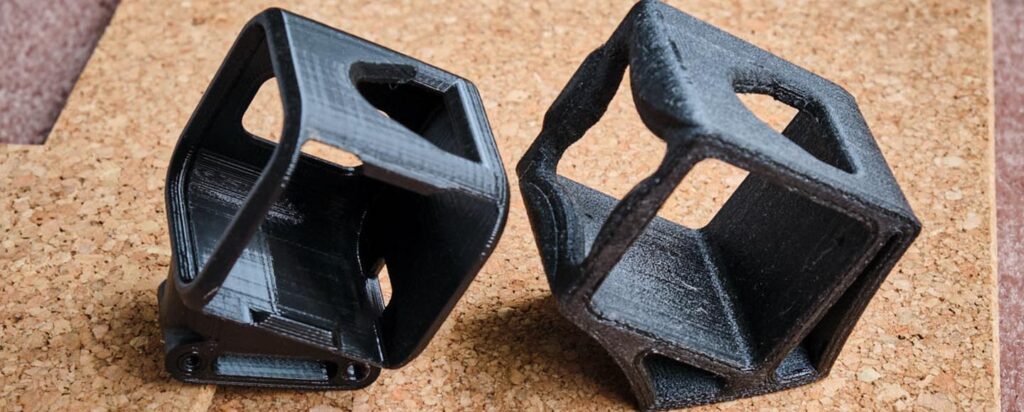

Do you want to find the best TPU filament? TPU’s are fantastic for their flexibility, abrasion resistance, toughness, and performance in a wide temperature range. They have excellent versatility and are a brilliant material for 3D printing. But with many different types available, it can be hard to know which TPU 3D printing filament you should pick. That’s where we’ll help with our picks of the top-rated options out there.
What makes the best TPU filament? Well, we’ve taken many factors into account, such as the diameter, extrusion temperature, bed temperature, and printing speed, along with other important specifications such as net weight, shore hardness, and color. Based on these, the SainSmart Flexible TPU 3D Printing Filament became our favorite. With our 12 TPU filament reviews, you will be able to find all the info you need to ensure that your next project will be successful. Are you ready to learn more? Read on, and you’ll soon be ready to make your final decision. Let’s go!
More features: easy to print, doesn’t warp
We think this is the best 3D printer TPU filament on the market today, and there are plenty of reasons for that. It comes in the more common 1.75mm diameter and a wide range of 15 different colors, so you can get exactly what you want.
It has a shore hardness of 95A, which you what many think is the perfect balance of flexibility and strength. This filament is very easy to print with, and it also doesn’t warp to give you the best possible results. It’s a great filament with a net weight of 0.8kg.
What we liked: The quality throughout the filament is very high. You’ll love the defined edges that you get from it and the fact it bridges very well. Anything you make will be very strong and have high durability that is associated with TPU.
What could be better: There is very little to moan about with this filament. It can sometimes kink, which can be a little frustrating. This is rarely a big issue, and overall, this is a fantastic option for anyone who wants excellent TPU filament.
More features: harder than TPE, appropriate adhesion, suits a variety of FDM 3D printers
In terms of value for money, this could well be the best 3D printer TPU filament out there. It has a long list of great qualities while being highly affordable. The bed temperatures required here are a little higher than with some of its rivals, which is worth bearing in mind.
It has a high level of compatibility and works very well at a printing speed between 15 and 30 mm/s, which is quite slow but not uncommon for TPU. It’s quite a hard version of TPU and is fairly simple to work with, whatever you’re making.
What we liked: If you wanted a high level of toughness from your TPU then this would be a great option. It’s able to give you that while still being flexible. Bed adhesion is very good, and you’ll enjoy the fact it has minimal stringing and a high level of consistency.
What could be better: It’s important to follow the manufacturer’s guidance as you need to get the settings exactly right. It may take some trial and error until you get the right results, but when you do, you’ll love this TPU.
More features: 30-day free return period, prevents clogging, tangling, warping
This TPU 3D printing filament has the lowest shore hardness rating of any filament on this list. It makes it ideal for those looking for a bit more flexibility from their designs. This is aided by the narrow 1.75mm diameter.
It requires a higher bed temperature than some of its rivals and needs fairly slow printing. A good feature here is the 30-day return period if you’re not happy with the filament. Another positive aspect of the filament is that it doesn’t tangle or warp very easily.
What we liked: There is a vibrant range of colors to work with, and this filament is great for making toys along with a wide range of applications. You’ll get a smooth level of print quality here and excellent results, which makes it brilliant value for money.
What could be better: For many people, the filament can arrive a little wet, and therefore, it may need to be dehydrated before use to avoid the problems associated with a damp filament.
More features: wide compatibility, can stretch 3 times more than its original length, comes with build surface
Overture is another company that has made an impressive TPU flexible filament. This one has a wide level of compatibility, so you should have no issues with using it for your printer. When you do, you’ll be impressed by the results.
It has an impressive level of stretch throughout the filament while also having the required strength. It can be used with lower bed temperatures and has the extrusion temperature and printing speed you’d expect from TPU. It has a net weight of 1kg, and there are 14 color options available.
What we liked: If you wanted to have a soft and flexible filament, this would be a great idea. It gives you those properties while not sacrificing anything in terms of strength. It comes in a sealed bag, which keeps it bone dry, and another aspect we loved was the excellent adhesion.
What could be better: It can be a little tricky to print with at times. It’s fairly typical for TPU, but it may take you a few goes until you get it exactly right. When you find the perfect formula, you’ll be very happy with the results.
More features: wide compatibility, soft and elastic, prevents cracking
This Priline 3D printer filament ticks all the right boxes on what makes a great TPU. It has a standard diameter of 1.75mm and a shore hardness of 98A. That’s great for anyone looking for a little more rigidity from their designs.
The extrusion temperature required here is also a little lower than with some products, and it needs a bed temperature of 50C. Printing speeds are a little quicker here at up to 50 mm/s, and that’s despite this filament has those soft and elastic qualities.
What we liked: While the previous model we looked at had quite a lot of stringing, the stringing with this filament was minimal. It’s very easy to use, and the shore hardness gives you plenty of versatility in your creations.
What could be better: Unfortunately, the filament is not wound very well around the spool. This can lead to a bit of snagging and it feeding through not as it should. This is a little bit frustrating on an otherwise very impressive filament.
More features: eco-friendly, less Odor, less warping & clog-free, bubble-free.
NOVAMAKER TPU Filament is flexible TPU filament that is noted for its superb flexibility and durability. It is hard to break and can absorb impact well, which makes it ideal if you’re looking for a strn¡ong material. This filament can withstand adverse conditions including heat, oil, water and even certain chemicals. So, if you’re looking for a resilient and durable filament, this is a great choice.
This product is made in the USA to ensure best performance and eco friendliness. It has less odor, warping and clogging compared to similar products and can stretch up to three times more than its original length. It is fully dried before packing and vacuum sealing, to minimize tangles and has superb temperature resistance. In fact, NOVAMAKER is so confident about its product, there is a one-month free trial and lifetime quality promise.
More features: no bubbles, minimal warping
If you were looking for a slightly smaller spool, the net weight here of 0.5kg might be ideal for you. The rest of the specifications are fairly standard such as the extrusion and temperatures, diameter, and shore hardness.
A positive aspect of this filament is that it’s not going to produce any bubbles. The warping is also extremely minimal, so you’re going to be left with some very clean designs. Six color options are available here, and it offers printing speeds of between 15-30 mm/s.
What we liked: We were very impressed by the level of strength here. It’s brilliant and able to produce highly durable pieces. While there may only be 6 colors available, they are vibrant and look fantastic on the finished product.
What could be better: This is another filament that requires a slow printing process. That is one of the downsides of TPU, as it is going to take a little bit longer than some other options available.
More features: compatible with almost all desktop FDM/FFF printers, consistent extrusion and winding, extremely durable, comes with resealable bag
If you have either an FDM or FFF printer, you should have no worries about this filament’s compatibility. It can also be used on other printers due to the consistent level of extrusion and winding.
It comes with a resealable bag, which is a nice feature to keep it dry. It’s available in both 1.75mm and 2.85mm, and that allows you to choose your perfect diameter. The temperatures and speeds are fairly standard, and there are 6 colors available here.
What we liked: We were very happy with the finished pieces you get from this machine as they are clean and precise. That’s helped by minimal sticking or stringing. It’s also not going to jam your printer, and you won’t get the same level of frustration here that you can with other models.
What could be better: The bed adhesion here isn’t bad, but it’s not as good as some other TPU’s we looked at. It requires a bed temperature of 50°C – 70°C, and you may have to play around with it to get the perfect results.
More features: 1-year limited warranty, vacuum-sealed packaging, built-in gauge
If you’re looking for a quality 3D printer filament that won’t break the bank, you can’t really go wrong with the Amazon Basics TPU 3D printer filament. It is designed to fit most common printers and is ideal for printing small parts or watch bands, phone cases or other modest items. It is made of flexible, strong TPU which is not only easy to use, but offers excellent layer to layer bonding. This filament is grease, oil and scratch resistant, holding up well to everyday wear and tear.
This product has been engineered to reduce jamming and is provided in a resealable storage bag to protect the filament between uses. There is even a built in spool gauge to show the approximate remaining length.
More features: compatible with all FDM printers, excellent bed adhesion, no warping, comes with useful accessories
If you have an FDM printer, you can be confident that this filament is going to work with it perfectly. It has many qualities, such as excellent bed adhesion, and doesn’t have any warping. It also comes with a wide range of accessories, which is unusual for a filament.
The extrusion and bed temperatures are fairly standard, with a net weight of 0.8kg and a shore hardness of 95A. The printing speeds are quite slow, and there are only 7 colors available here, so you may find your choice to be a little limited.
What we liked: The accessories are a nice touch and maybe a clincher for some. The strong bed adhesion is a good example of what makes this TPU simple to use. It’s great to have as you’re going to be able to complete a wide range of projects with it.
What could be better: As mentioned, the printing speeds required for this TPU are very slow, so you have to be patient with the process. If you take your time with it, you’ll be able to get those impressive results.
More features: no warping, excellent for beginners
Are you looking for a thicker filament? If so, the 2.85mm of this TPU could be what you need. It’s very easy to work with and doesn’t require a high bed temperature. The extrusion temperature and speed are both fairly standard.
Due to the extra thickness, this is ideal for beginners that have never worked with TPU before. Next, it will have no warping and is exceptionally easy to work with. It’s available in just luminous green and has a shore hardness of 92A. The spool is a little smaller at 92A.
What we liked: We like how simple it is to print with this filament. That’s in part due to the good consistency that you get throughout it. It also has wide compatibility and versatility. This filament can be used for a wide variety of projects.
What could be better: We loved this filament, but we were disappointed by the lack of color options. With just luminous green available, you are limited to what you can do with it.
More features: abrasion-resistant, smooth feeding
NinjaTek is well known for producing brilliant filaments, and this is no different. It’s one of the smallest spools on the market with a net weight of just 0.5kg. The diameter of the filament is 1.75mm, which will be suitable for most users.
It can be used without a heated bed, which is great for many users, and that is aided by very strong adhesion. This model is only available in black, which is annoying, but there are impressive features such as its smooth feeding and abrasion resistance.
What we liked: As mentioned there, the feeding is smooth, which helps to make it very easy to print. The results are very impressive, with a professional level of quality. It allows you to create a vast range of top-notch items.
What could be better: While the results are very good, you may have to put up with some stringing. This can be quite easily tidied up, but this requires extra work. Most TPUs string a little bit, but this does a little more than usual.
It’s important to get the right TPU filament for your printer. You don’t want to be excited about getting your new filament only to find it’s not what you need or doesn’t work with your printer. To prevent that from happening, we’ve created this buying guide. We’ll go through all of the key features that you need to consider and see why they might be important for you. By the end, you’ll know exactly which TPU filament will be best for you.
There are many impressive advantages to TPU. One of the main ones is simply its tensile strength as it will be able to take a lot of punishment before ever breaking. That durability is also aided by its abrasion and chemical resistance. All of these qualities make it one of the toughest materials to work with.
Depending on the specific type that you get, TPU can offer you a range of flexibility and/or elasticity. This gives you plenty of versatility on what you can make with the material.
Finally, TPU also works very well in a wide range of temperatures and is fairly simple to work with. This makes it the 3D printer material of choice for many users.
To sum up, we recommend it because of these fantastic qualities:
There are many things you need to consider when getting a TPU filament. Firstly, you need to ensure that it’s going to be compatible with your printer. After that, you have to ponder which specifications are important to you.
This includes looking at the temperatures required, diameter, and speed. Once you know that it’s the right fit, you can look at overall performance, ease of use, shore hardness, and color selection. Once you’ve considered all of this, you’ll know what to pick.
Not all extruders are going to be a perfect fit for flexible filaments. This generally comes down to the difference between Bowden extruders vs. direct-drive extruders. For the majority of occasions, it’s going to be better for you to use a direct-drive extruder due to the short distance between the drive gear and the melt zone. Bowden extruders can still be used but usually only for partially flexible filaments rather than fully flexible filaments.
If you’re unsure about compatibility, it’s a good idea to check the manufacturer’s instructions to see if the specific filament can be used for your 3D printer.
There are two standard diameters with 3D printing filaments, and they are 1.75mm and 2.85mm. 2.85mm filament is often referred to as 3mm, so no need to get confused between the two.
The difference in terms of application is minimal most of the time, but there are a few reasons why 1.75mm is the more commonly used type. 1.75mm allows for a greater level of accuracy, gives you greater control, and you can also use it at a faster printing speed.
So why use 2.75mm (or 3mm)? Well, due to its thicker size, it works better with larger nozzles, is more rigid, and less likely to bend. It also doesn’t jam as easily as 1.75mm.
The extrusion temperature (or nozzle temperature) required for TPU is fairly consistent between different models. Often 210C is going to be ideal for most models, but some need to be a little hotter or colder than that.
If you are looking for something a little cooler, the PRILINE TPU 1.75 3D Printer Filament can operate with an extrusion temperature of around 190C. At the other end of the scale, the NinjaTek Cheetah TPU Filament may need temperatures of up to 240C.
One of the big advantages of TPU is that it doesn’t require a high bed temperature. In fact, some products, such as the NinjaTek Cheetah TPU Filament, can be used at room temperature, and thus, they don’t need the bed to be heated at all.
It’s always important to follow the guidance on the ideal bed temperatures. Some, such as the YOYI TPU 3D Printer Filament, do require a bed temperature of up to around 80C. If you don’t want to use a heated bed, you’re going to have plenty of options out there.
If you want to get more value for the money, it’s also a good idea to check the net weight of the filament. This will give you a good grasp of just how much is on the spool. We see some, such as the PRILINE TPU 1.75 3D Printer Filament, which has a full 1kg of net weight.
If you’re looking for something a little lighter or don’t need as much filament, you could opt for the Fillamentum Flexfill 92A, which has just 0.5kg net weight. Before buying, it’s important to check how much material you’ll be working with.
The shore hardness relates to a material’s resistance to indentation. The higher up on a scale you see, the more rigid a material is going to be. We see a lot of these TPU’s have a 95A shore hardness rating, such as with the Overture TPU Filament. This allows for high strength but still with flexibility on thinner parts.
If you want to have something with a little more flexibility, the YOYI TPU 3D Printer Filament would be a great choice at 85A.
Between 85A and 95A, you have plenty of versatility as you can make thinner parts with more flexibility, such as a belt, or denser pats with more strength, such as a skateboard wheel.
One of the downsides to TPU is that it generally has lower printing speeds than other types of filament. The reason for this is that material is more difficult to push through, and it can quickly lead to jamming issues if you try to do it too quickly.
While that is true, the printing speeds can vary between different TPU’s. If you want to have a particularly quick model, you can choose the NinjaTek Cheetah TPU Filament, which can print at more than 60 mm/s. That is more than some other models that have a maximum of 30 mm/s.
It’s always nice to have a wide range of colors to get exactly what you need. The importance of this is going to depend on what you’re making. The Fillamentum Flexfill 92A is only available in luminous green, which leaves you quite limited.
The SainSmart Flexible TPU 3D Printing Filament, on the other hand, gives you a wide range of great colors, which gives you more flexibility in what you can make. Not only are there plenty of colors available, but they are also vivid and look brilliant with whatever you’re making.
While TPU is generally more rigid, it can be still be used to make flexible shapes. Two big advantages of TPU is that you usually have a smoother finish, and it’s also easy to print with. Lastly, it shrinks less and has better abrasion resistance.
PLA (polylactic acid) is a very commonly used filament but doesn’t have the same elasticity or flexibility as TPU, and therefore, it isn’t suitable for some prints. PLA is very easy to print but is limited in its use.
That’s just a good example, but it can be used for a lot more than that. Automotive parts are another good example due to the resistance of the material to heat and oil. The likes of seals, plugs, and gaskets can be a great use of TPU.
Beyond that, you have wristbands, insoles, door stops, straps, caps, cable ties, grips, and a lot more. Those qualities of strength and flexibility give it fantastic versatility.
TPU is naturally very good at adhesion to a bed when compared to other types of filaments. Some like the YOYI TPU 3D Printer Filament do require a bed temperature of 60°C – 80°C (140°F – 176°F), which is higher than most other TPU’s.
If you don’t want to use a heated bed, it’s important to double-check the temperature, but for most TPU’s, it won’t be an issue.
We were impressed with all the filaments that we looked at here. If we had to choose one, it would be the SainSmart Flexible TPU 3D Printing Filament. It’s able to deliver fantastic results, is easy to work with, and has a great range of colors.
If you are on a budget, the 3D BEST-Q Flexible TPU 1.75mm 3D Printer Filament may be your filament of choice. It’s a little more affordable but is still very impressive.
Are you looking for more flexibility? If so, the YOYI TPU 3D Printer Filament would be a great option with the 85A shore hardness.
While those three are great options, we could have easily highlighted any of the other seven we looked at. It’s important to get a product that is right for your needs and is compatible with your printer. Once you get the best TPU filament, you’ll love doing your wonderful projects!
